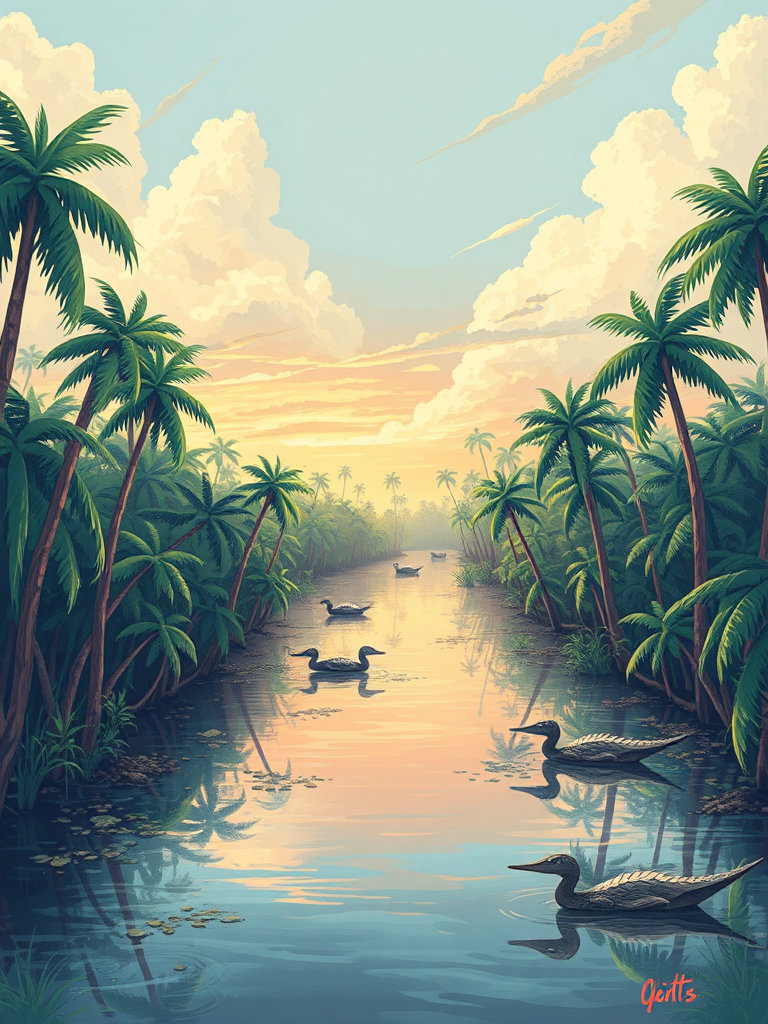The Everglades, often called the “River of Grass,” forms an essential part of Florida’s natural beauty and ecosystem. Known for its vast wetlands and unique wildlife, this region is more than just a tourist attraction. It is an integral part of our planet’s ecological balance, a sanctuary teeming with biodiversity, and a testament to the richness of our natural world.
Home to countless species, including alligators, manatees, and the elusive Florida panther, the Everglades showcases nature’s splendor in a myriad of ways. This subtropical wilderness provides a crucial habitat for many endangered species, making it a critical area for conservation efforts. The rich array of fauna coexists with equally diverse flora, with sawgrass marshes, cypress swamps, and mangrove forests painting a picture of ecological diversity.
Yet, the Everglades faces numerous challenges that threaten its vibrant tapestry of life. For decades, human activities such as urban development, agriculture, and water diversion projects have altered the Everglades’ natural ecosystem.
The resulting habitat loss and changes in water flow patterns have taken a toll on the local wildlife, with certain species struggling for survival.
Additionally, the intrusion of invasive species has further upset the delicate ecological balance of the Everglades.
However, the tide is turning, with conservation efforts ramping up to restore the Everglades to its former glory.
Multiple initiatives, spearheaded by government agencies and environmental organizations, are underway to combat the threats facing the Everglades.
These initiatives aim to reverse habitat destruction, control invasive species, and reestablish natural water flow patterns.
One of the significant steps in Everglades restoration is the Comprehensive Everglades Restoration Plan (CERP). This ambitious plan aims to “get the water right” by addressing the complex water management issues facing the region. By restoring natural water flows, CERP seeks to rejuvenate habitats and provide the necessary conditions for wildlife to flourish.
At the same time, efforts are being made to control and eliminate invasive species that threaten the Everglades’ biodiversity. From the Burmese python to the Brazilian pepper tree, invasive species pose a significant challenge to the Everglades’ health. Dedicated teams are working hard to manage these invasives, using a combination of manual removal, biological control, and public education.
In addition to these large-scale efforts, individual actions play a crucial role in Everglades conservation. From participating in clean-up events and supporting local wildlife rescue organizations to adopting sustainable practices that reduce environmental impact, each action contributes to the preservation of this unique ecosystem.

While the challenges are indeed daunting, the story of the Everglades is not one of despair but of resilience and hope. As efforts to restore and protect this natural treasure continue, a brighter future beckons for the “River of Grass”. A journey that serves as a testament to our capacity to repair and safeguard our planet’s ecological heritage, the Everglades’ story is one we can all take inspiration from.
The Everglades teaches us that, with concerted efforts, we can restore the balance of nature.
It’s a living lesson in resilience, a testament to the power of preservation, and a call to action for us all. After all, in protecting the Everglades, we’re not just saving a unique corner of our world, but also preserving a dynamic ecosystem that is integral to our planet’s health.